Overview
Indonesia, an archipelago of over 17,000 islands, offers visitors a unique blend of rich cultural heritage, breathtaking natural beauty, and a fascinating history.
Known for its tropical beaches, dense jungles, and ancient temples, Indonesia captivates travelers with its diverse landscapes and welcoming people.
From the vibrant metropolis of Jakarta to the tranquil islands of Bali and Lombok, Indonesia is a paradise for adventurers, history buffs, and nature lovers alike.
Let’s explore the top 15 tourist attractions in Indonesia, each highlighting the natural beauty and cultural richness that make this Southeast Asian gem a must-visit destination.
Table of Contents
1. Borobudur Temple, Central Java
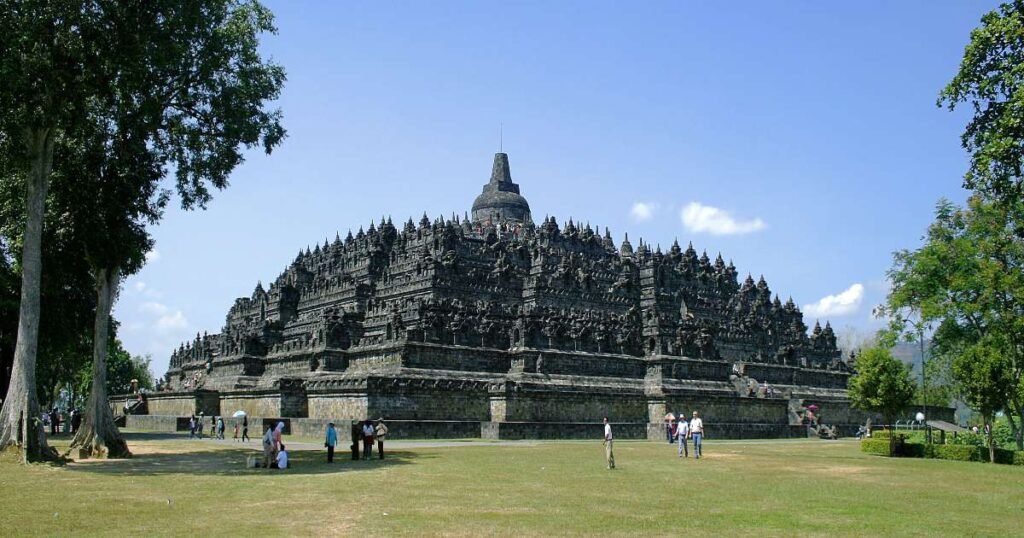
Borobudur, one of the world’s largest Buddhist temples, is an architectural marvel dating back to the 9th century. Its intricate carvings and stunning design make it an iconic symbol of Indonesia’s rich heritage.
Historical and Cultural Significance: Constructed during the Sailendra Dynasty, Borobudur is a UNESCO World Heritage Site and represents Indonesia’s ancient Buddhist roots.
Unique Features: The temple’s 72 stupas and central dome create a breathtaking structure. Pilgrims often walk the circular paths around the temple in a spiritual journey.
Best Time to Visit: In the early morning, witness the sunrise over the temple and avoid the afternoon crowds.
Travel Tips:
- Transportation: Accessible from Yogyakarta by bus, car, or organized tour.
- Accommodation: Yogyakarta offers a range of accommodations from budget to luxury.
- Local Customs: Dress respectfully when visiting religious sites. Shoulder-covering attire is recommended.
2. Bali’s Beaches, Bali
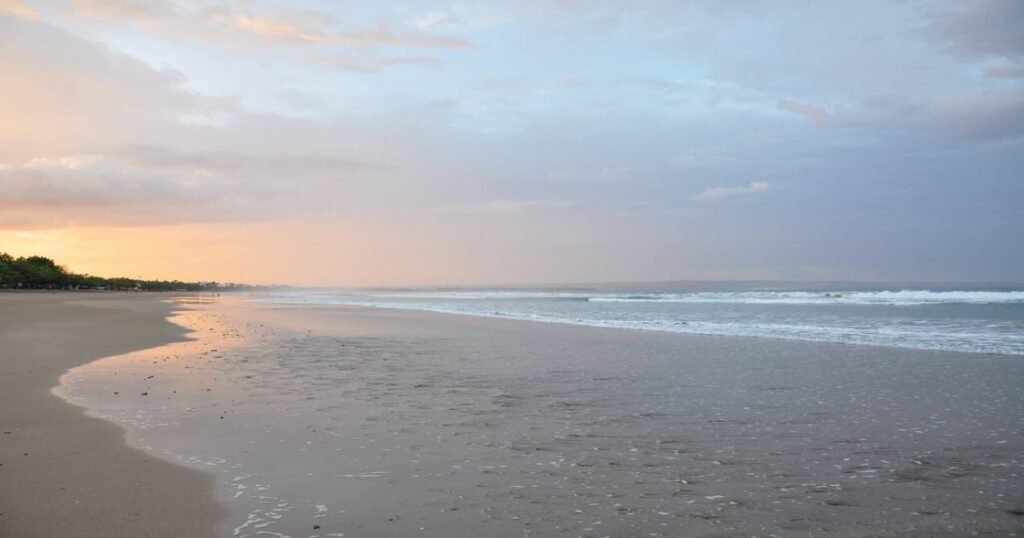
Bali is renowned for its world-famous beaches, from the vibrant Kuta Beach to the serene shores of Nusa Dua.
Historical and Cultural Significance: Beyond its scenic coastlines, Bali’s beaches are home to traditional fishing communities and sacred sea temples like Tanah Lot.
Unique Features: Each beach offers its own experience—Kuta for surfing, Jimbaran for seafood, and Sanur for tranquility.
Best Time to Visit: April to October, the dry season offers the best beach weather.
Travel Tips:
- Transportation: Bali is well-connected with taxis, scooters, and ride-sharing options.
- Accommodation: Bali has everything from luxury beach resorts to affordable homestays.
- Local Customs: Respect the local Balinese Hindu culture, especially around sacred sites and temples.
3. Komodo National Park, East Nusa Tenggara
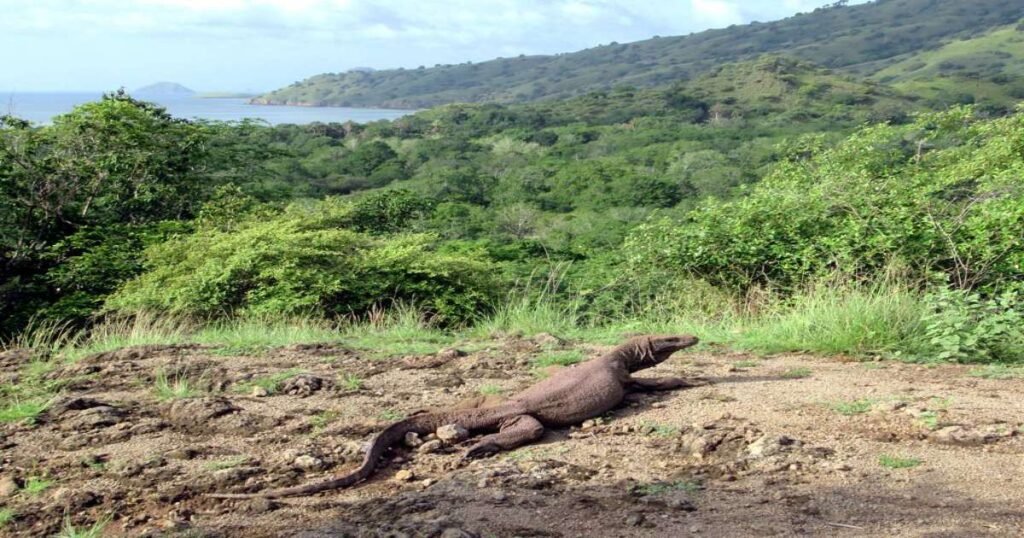
Known for the legendary Komodo dragon, Komodo National Park is a UNESCO site and one of Indonesia’s natural wonders.
Historical and Cultural Significance: The park preserves the endangered Komodo dragon, a species native only to this part of the world.
Unique Features: Besides the dragons, the park offers stunning coral reefs, pink sand beaches, and some of the best diving in Indonesia.
Best Time to Visit: April to December, when the weather is clear for outdoor activities.
Travel Tips:
- Transportation: Accessible via Labuan Bajo by boat.
- Accommodation: Labuan Bajo offers eco-lodges and small hotels for a range of budgets.
- Safety: Keep a safe distance from Komodo dragons and follow your guide’s instructions.
4. Mount Bromo, East Java
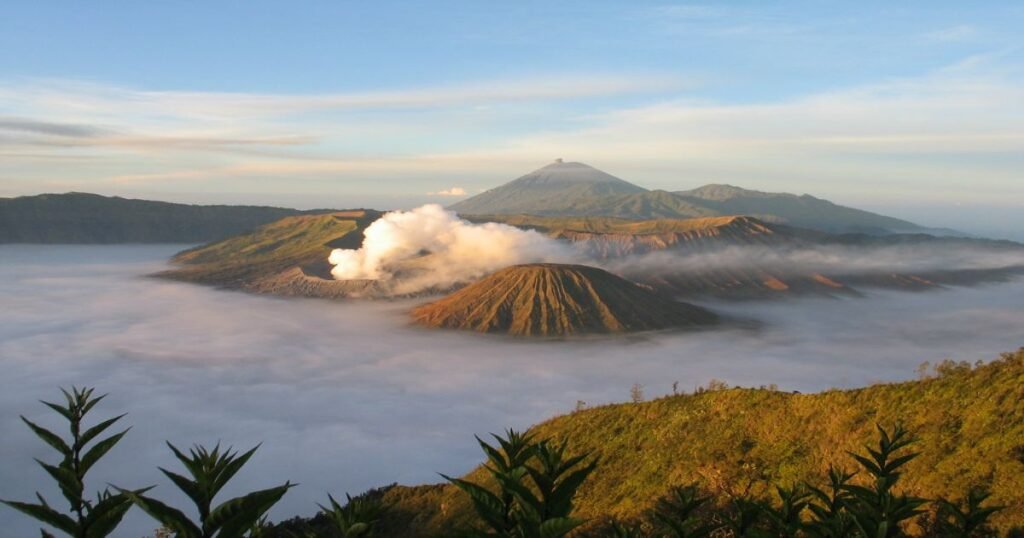
Mount Bromo is an active volcano famous for its otherworldly landscape and sunrise views over the Tengger Caldera.
Historical and Cultural Significance: The volcano is significant in Tenggerese culture, with an annual Yadnya Kasada ceremony held at its peak.
Unique Features: Standing atop the volcano at sunrise is a truly unforgettable experience, with sweeping views over the surrounding peaks.
Best Time to Visit: June to August for clear skies and fewer rain showers.
Travel Tips:
- Transportation: Reachable by car from Malang or Probolinggo.
- Accommodation: Options in nearby towns like Malang and Probolinggo.
- Safety: Dress warmly as temperatures can drop, especially before sunrise.
5. Tanah Lot Temple, Bali
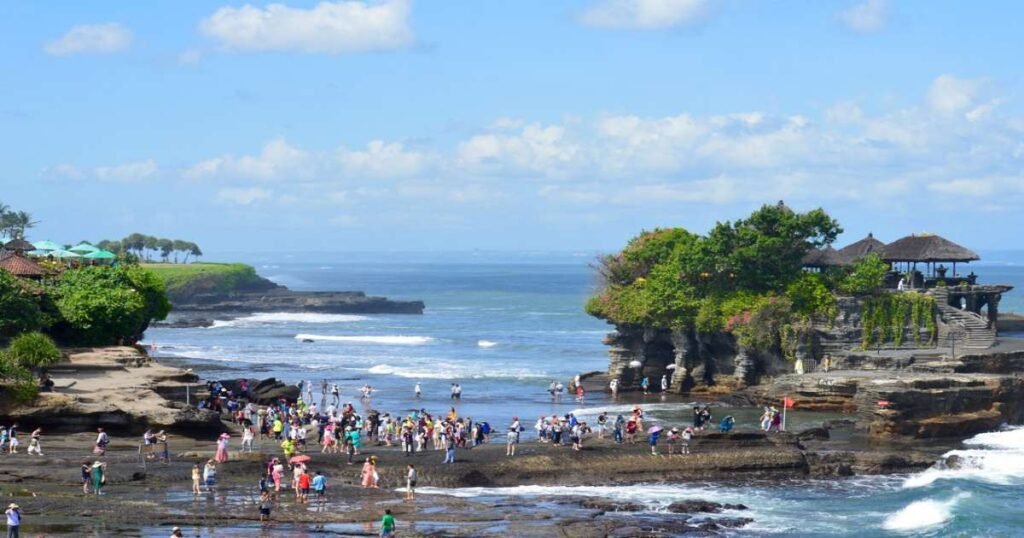
Tanah Lot, a stunning sea temple perched on a rock formation, is one of Bali’s most iconic landmarks.
Historical and Cultural Significance: This 16th-century temple holds immense religious significance in Balinese Hindu culture.
Unique Features: Surrounded by waves, it’s especially captivating at sunset when the sun casts a golden hue over the temple.
Best Time to Visit: Sunset, for magical views and a vibrant atmosphere.
Travel Tips:
- Transportation: Reachable by car or taxi from Kuta or Seminyak.
- Accommodation: Many hotels nearby offer temple views.
- Local Customs: Show respect at religious ceremonies, and don’t enter restricted temple areas.
6. Lake Toba, North Sumatra
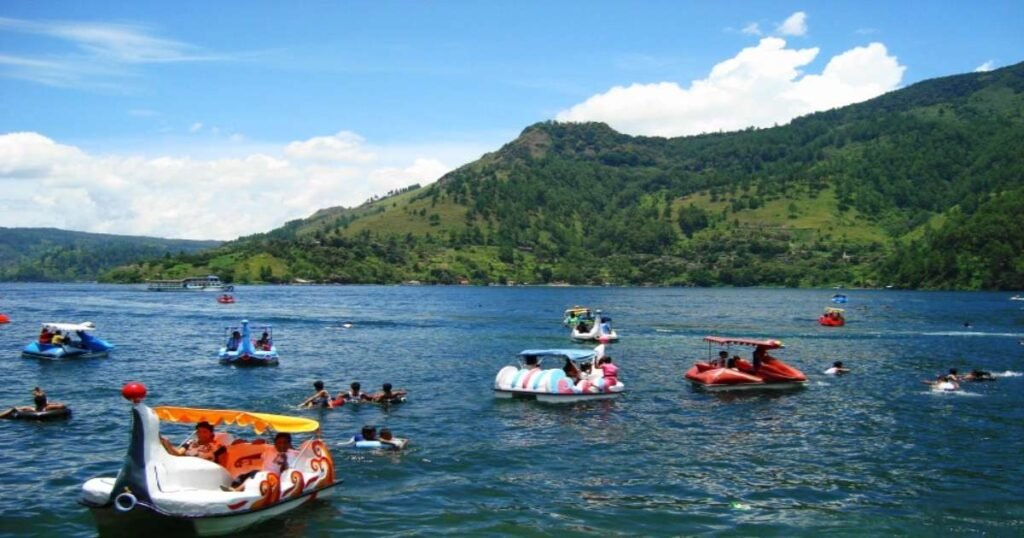
Lake Toba is the largest volcanic lake in the world, a stunning natural attraction with lush surroundings.
Historical and Cultural Significance: The lake was formed by a supervolcanic eruption around 75,000 years ago, and the local Batak culture thrives around its shores.
Unique Features: Samosir Island in the center offers traditional Batak villages, with unique architecture and vibrant local festivals.
Best Time to Visit: May to September, during the dry season for better weather.
Travel Tips:
- Transportation: Fly to Medan and take a bus or car to the lake.
- Accommodation: Options range from guesthouses to lakeside hotels.
- Local Customs: Engage with the Batak community respectfully and learn about their unique customs.
7. Ubud, Bali
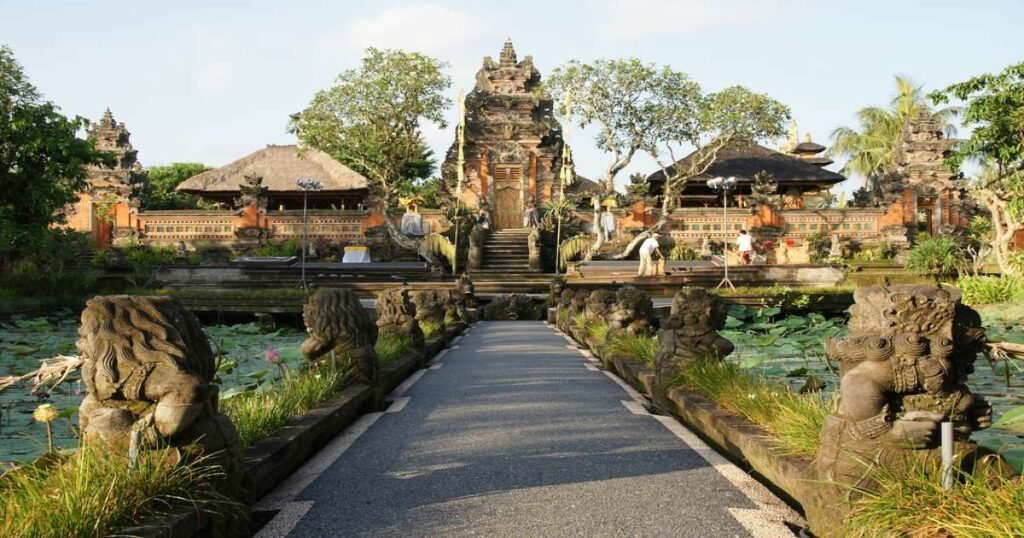
Ubud is Bali’s cultural heart, known for its art, temples, and lush rice terraces.
Historical and Cultural Significance: Home to many traditional craftspeople and artists, Ubud celebrates Balinese culture through art, dance, and spiritual practices.
Unique Features: The Tegalalang Rice Terraces, Monkey Forest, and traditional markets offer a perfect blend of nature and culture.
Best Time to Visit: March to October, for pleasant weather and less rain.
Travel Tips:
- Transportation: Ubud is accessible by taxi or scooter from major towns in Bali.
- Accommodation: Ubud offers everything from luxury wellness retreats to budget stays.
- Local Customs: Respect the Balinese Hindu customs and be cautious around monkeys in the Monkey Forest.
8. Raja Ampat Islands, West Papua
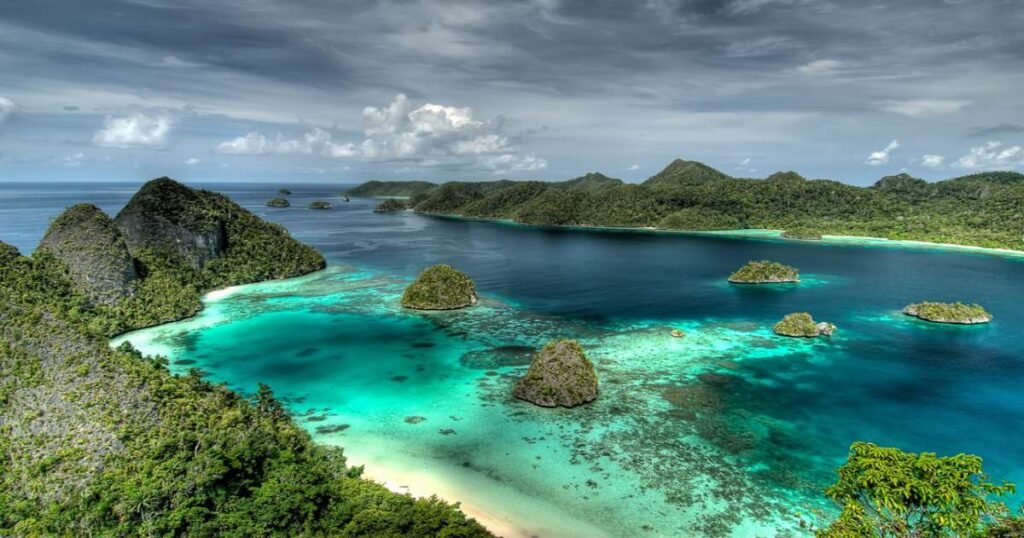
Known as one of the best diving spots in the world, the Raja Ampat Islands are a paradise for underwater enthusiasts and nature lovers.
Historical and Cultural Significance: The islands are home to a rich marine biodiversity and are part of the Coral Triangle, often referred to as the “Amazon of the ocean.”
Unique Features: Crystal-clear waters, colorful coral reefs, and over 1,500 species of fish make Raja Ampat a haven for divers and snorkelers.
Best Time to Visit: October to April for the best underwater visibility and mild weather.
Travel Tips:
- Transportation: Reachable via Sorong, followed by a boat ride to the islands.
- Accommodation: Eco-resorts and guesthouses are available on the main islands.
- Local Customs: Practice responsible tourism, respecting marine life and the natural environment.
9. Prambanan Temple, Central Java
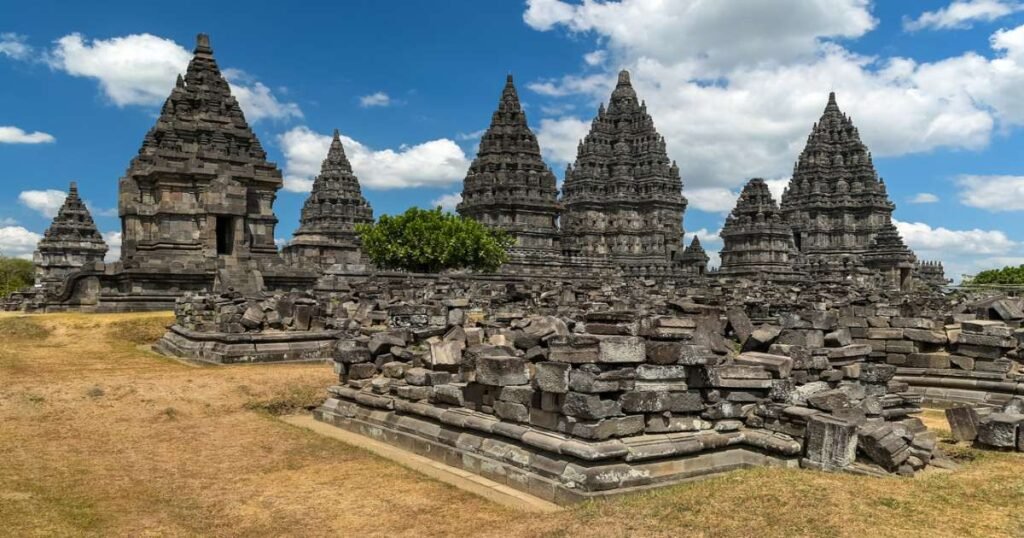
Prambanan is an impressive Hindu temple complex dating back to the 9th century, known for its towering spires and intricate carvings.
Historical and Cultural Significance: This UNESCO World Heritage Site is dedicated to the Hindu gods Shiva, Vishnu, and Brahma, and reflects ancient Javanese Hindu culture.
Unique Features: The complex includes several tall, elaborately decorated temples and holds a yearly Ramayana ballet performance.
Best Time to Visit: Early morning or late afternoon to avoid the heat.
Travel Tips:
- Transportation: Accessible from Yogyakarta by bus or taxi.
- Accommodation: Stay in Yogyakarta, which has a range of options for all budgets.
- Local Customs: Respect the temple as a religious site; dress modestly and avoid loud behavior.
10. Tana Toraja, South Sulawesi
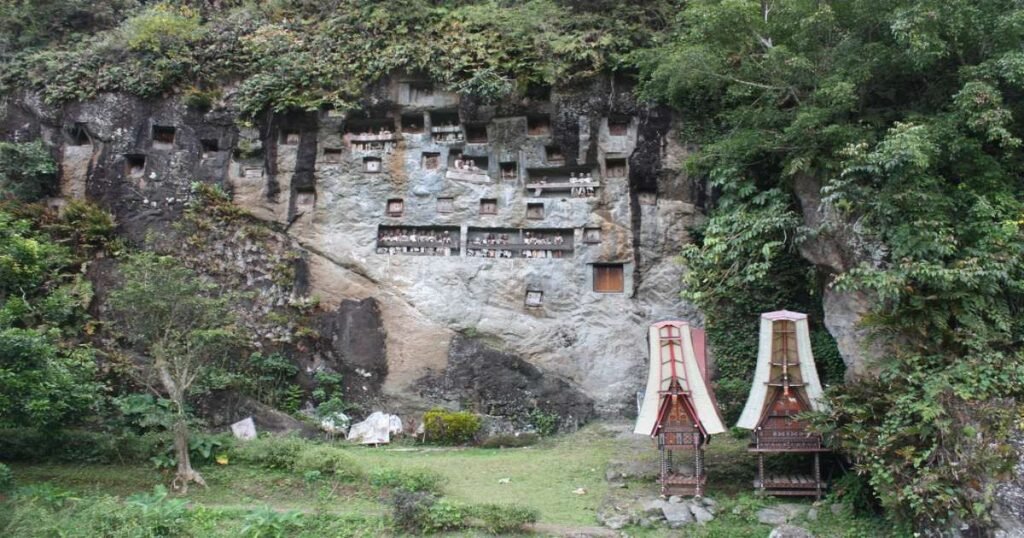
Tana Toraja is famous for its unique culture and elaborate funeral rituals, attracting visitors interested in traditional customs.
Historical and Cultural Significance: The Toraja people have a rich cultural heritage, particularly around death and the afterlife, symbolized by cliffside burial sites and wooden effigies.
Unique Features: Traditional houses with distinctive boat-shaped roofs, known as tongkonan, and ceremonial practices that reflect deep-rooted beliefs.
Best Time to Visit: June to August, when traditional ceremonies are frequently held.
Travel Tips:
- Transportation: Reach Tana Toraja by bus or car from Makassar.
- Accommodation: Guesthouses and hotels in Rantepao, the main town.
- Local Customs: Be respectful during ceremonies and ask permission before taking photos.
11. Gili Islands, Lombok
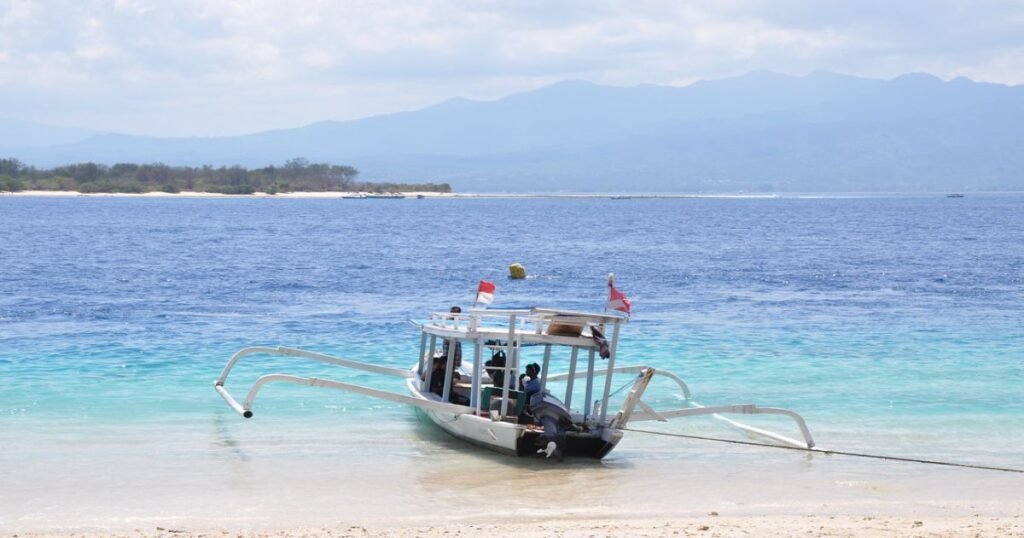
The Gili Islands—Gili Trawangan, Gili Meno, and Gili Air—are renowned for their pristine beaches, coral reefs, and relaxed atmosphere.
Historical and Cultural Significance: Although small, the Gili Islands hold cultural ties to both Lombok and Bali, blending local traditions with a modern, eco-friendly vibe.
Unique Features: Car-free islands where visitors can explore by bicycle or on foot, with excellent spots for snorkeling and diving.
Best Time to Visit: June to September for clear skies and warm waters.
Travel Tips:
- Transportation: Accessible by boat from Lombok or Bali.
- Accommodation: Choose from beach resorts, eco-lodges, and budget accommodations.
- Local Customs: Help preserve the islands’ environment by avoiding single-use plastics and conserving water.
12. Bromo Tengger Semeru National Park, East Java
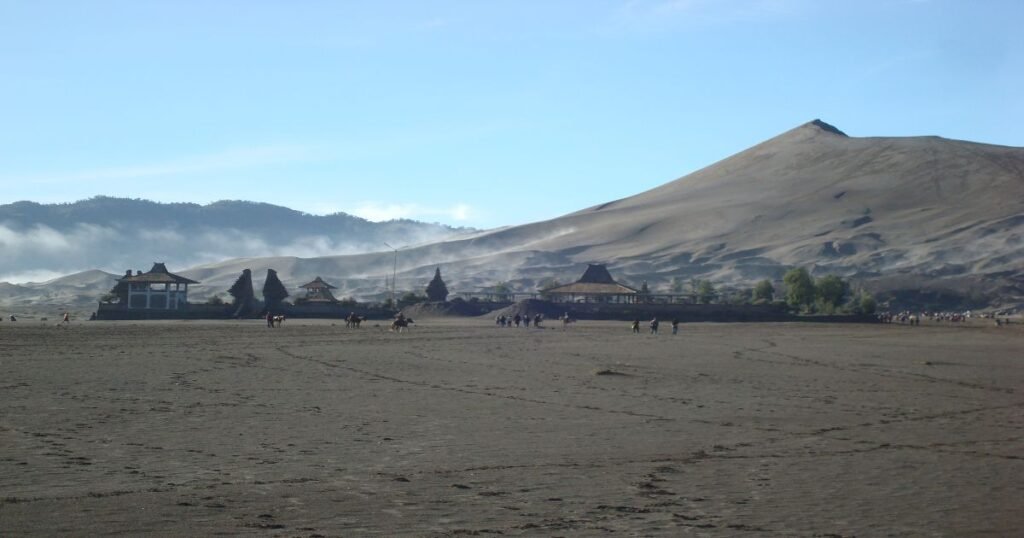
This national park is home to the active Mount Bromo and Mount Semeru, Indonesia’s highest volcano.
Historical and Cultural Significance: The park is significant for the Tenggerese people, who hold the annual Yadnya Kasada ceremony at Mount Bromo.
Unique Features: Dramatic volcanic landscapes, ash fields, and a panoramic view of the “Sea of Sand.”
Best Time to Visit: June to August for clear skies and cool temperatures.
Travel Tips:
- Transportation: Reachable from Malang or Probolinggo by car.
- Accommodation: Basic lodges are available around the park.
- Safety: Check for volcanic activity alerts before visiting and bring warm clothing for the early morning chill.
13. Banda Islands, Maluku
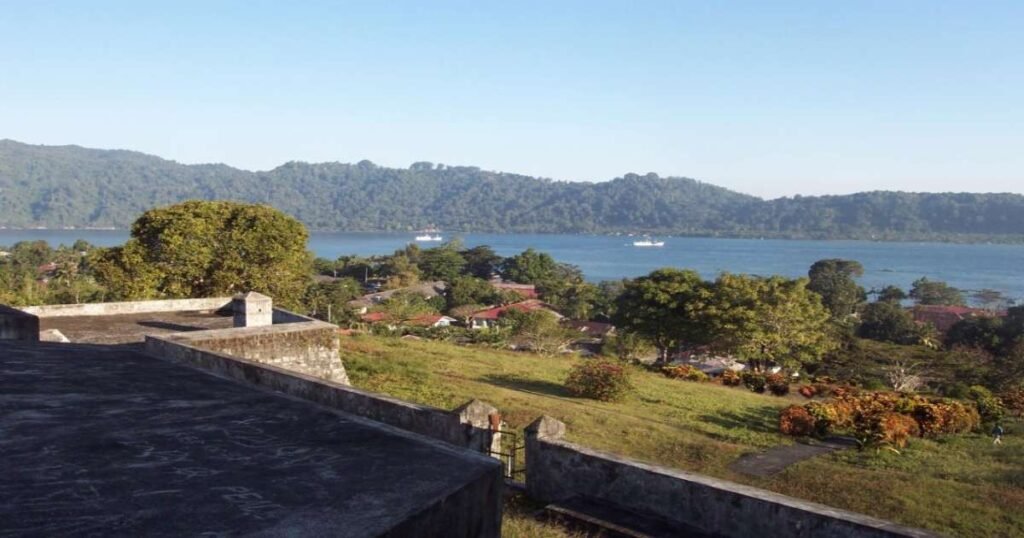
The Banda Islands, once known as the “Spice Islands,” are famous for their nutmeg and clove production, as well as their historical significance.
Historical and Cultural Significance: A vital part of the spice trade in the 16th century, the Banda Islands offer a glimpse into Indonesia’s colonial past.
Unique Features: Pristine coral reefs, ancient forts, and colonial architecture set against a backdrop of volcanic peaks.
Best Time to Visit: October to April for clear diving conditions and favorable weather.
Travel Tips:
- Transportation: Reachable by flight or ferry from Ambon.
- Accommodation: Limited to guesthouses and small hotels.
- Local Customs: Engage with locals to learn about the island’s history and avoid disturbing historical sites.
14. Nusa Penida, Bali
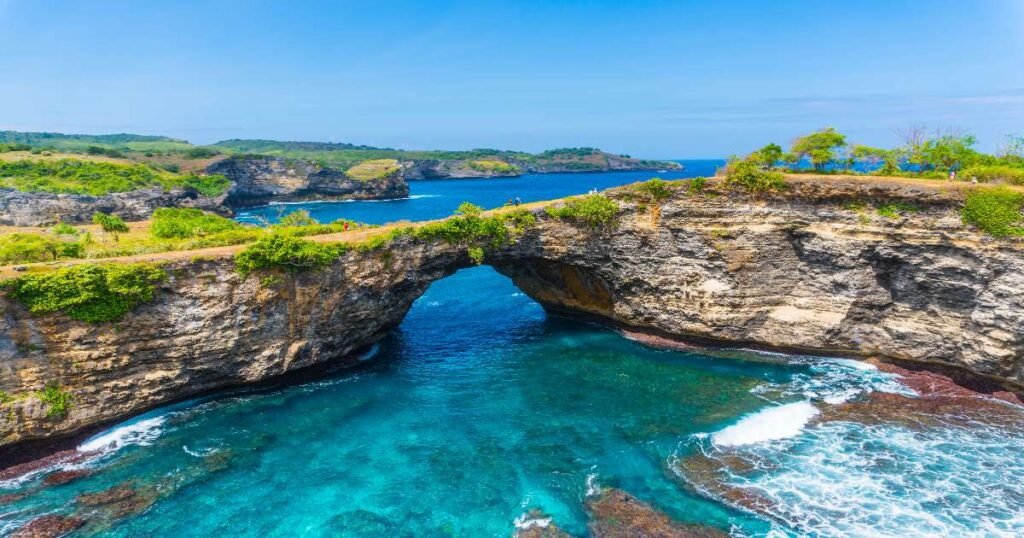
Nusa Penida is a picturesque island located southeast of Bali, known for its dramatic cliffs, turquoise waters, and marine life.
Historical and Cultural Significance: The island is considered a sacred place by locals and hosts several Balinese Hindu temples.
Unique Features: The island offers rugged cliffs, beaches, and top snorkeling spots with a chance to see manta rays.
Best Time to Visit: April to October, for drier weather and calmer seas.
Travel Tips:
- Transportation: Accessible by fast boat from Sanur or Padang Bai in Bali.
- Accommodation: Options range from budget guesthouses to boutique hotels.
- Local Customs: Respect sacred sites and avoid littering, as the island emphasizes environmental preservation.
15. Jakarta’s National Monument (Monas), Jakarta
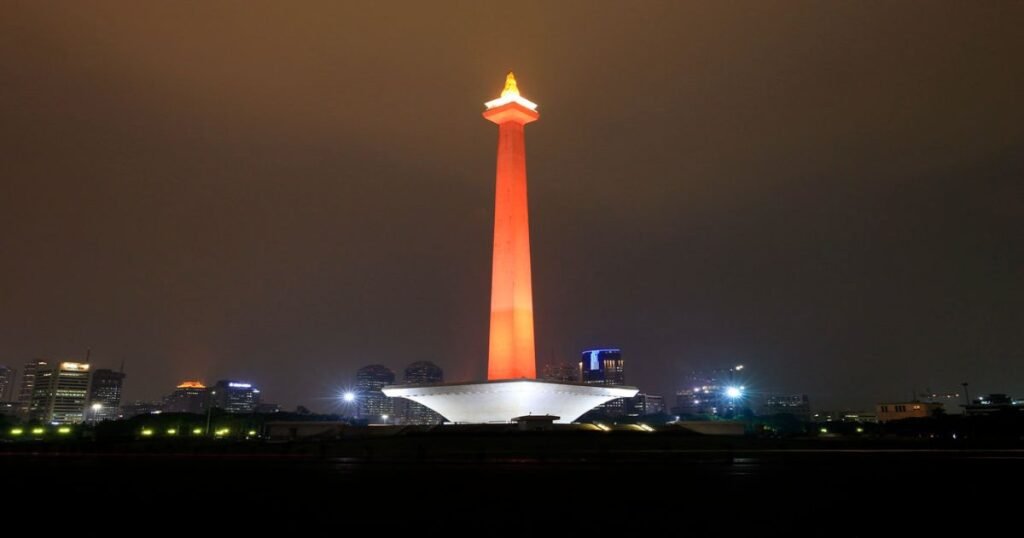
The National Monument, or Monas, stands as a symbol of Indonesian independence and is a key landmark in Jakarta.
Historical and Cultural Significance: Built in 1961, Monas commemorates Indonesia’s struggle for independence from colonial rule.
Unique Features: The towering structure offers a museum at its base and an observation deck at the top, providing views over Jakarta’s skyline.
Best Time to Visit: Early morning or late afternoon to avoid the midday heat.
Travel Tips:
- Transportation: Easily accessible by public transportation within Jakarta.
- Accommodation: Jakarta offers a range of accommodations, from budget hotels to luxury suites.
- Local Customs: Observe cultural etiquette when visiting museums and monuments; avoid loud behavior.
Also Read: Top Tourist Attractions In Vietnam
Conclusion
Indonesia’s incredible diversity—from its breathtaking natural wonders to its rich cultural heritage—provides endless opportunities for exploration.
From pristine beaches and volcanic landscapes to ancient temples and vibrant cities, the attractions of Indonesia offer a perfect blend of history, nature, and adventure.
Whether you’re exploring Bali’s serene temples or diving in the vibrant waters of Raja Ampat, Indonesia promises an unforgettable experience.
FAQs
1. Is it safe to travel to remote islands in Indonesia?
Many remote islands are safe for tourism, but it’s recommended to travel with a guide and check for travel advisories, as some regions might have limited medical facilities.
2. What language is spoken in Indonesia?
Indonesian (Bahasa Indonesia) is the official language, though local dialects are spoken in different regions. English is also widely spoken in tourist areas.
3. Can I use credit cards in Indonesia?
Credit cards are accepted in major cities and tourist areas, but it’s advisable to carry cash, especially in remote locations.
4. What should I know about Indonesian food?
Indonesian cuisine is flavorful and varies by region. Common dishes include nasi goreng (fried rice), sate (skewered meat), and rendang (spicy beef). Street food is popular, but be cautious with hygiene.
5. Do I need vaccinations to travel to Indonesia?
It’s recommended to be up-to-date on routine vaccinations and consider vaccinations for Hepatitis A, Typhoid, and, in some regions, Malaria. Check with your healthcare provider for travel-specific advice.
6. What is the best time of year to visit Indonesia?
The dry season from April to October is generally the best time to visit, especially for outdoor activities and beach trips.
7. Do I need a visa to travel to Indonesia?
It depends on your nationality. Some countries offer visa-free entry or visas on arrival. Check with the Indonesian consulate for the latest information.
8. Is it safe to visit Indonesia’s volcanoes?
Many volcanoes are open for tourism, but it’s best to check local advisories, as volcanic activity can affect safety.

